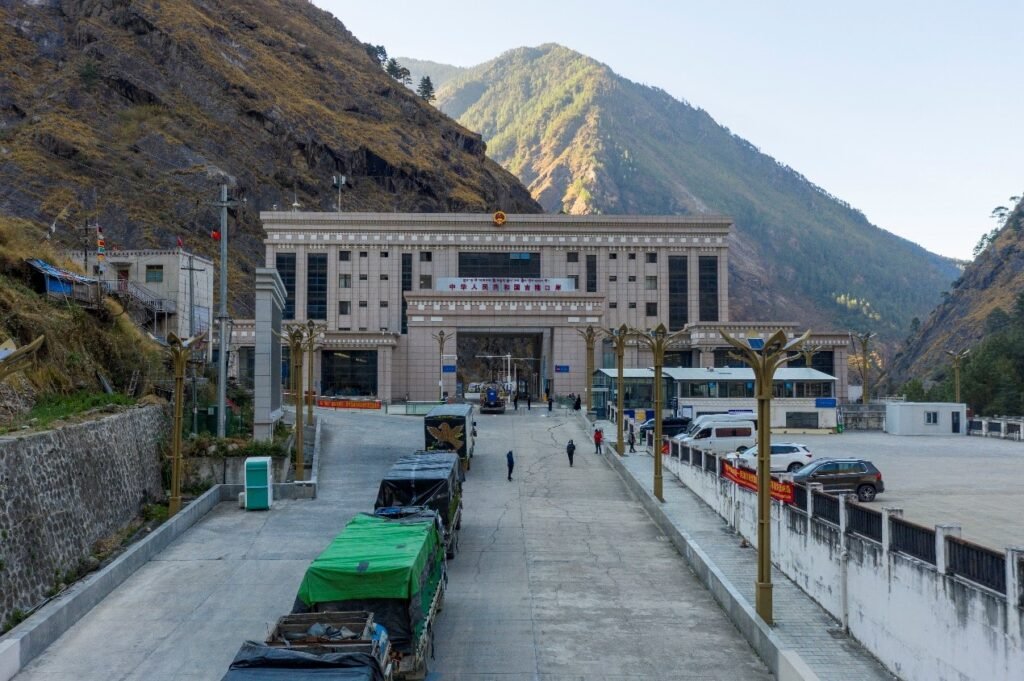Gyirong Port: Tibet’s Historic Gateway to Nepal
Gyirong Port is a vital passage in Tibet for political, economic, and cultural exchanges with Nepal. Located just 85 kilometers from Nepal’s capital, Kathmandu, this port is in Gyirong Town, Shigatse, Tibet. It marks the endpoint of National Highway 216 and lies in the Gyirong Valley, on the southern slopes of the Himalayas.
Rasuwa Village: The Cultural Hub
In Rasuwa Village, where Gyirong Port is based, the landscape is dramatic with high cliffs and mountains. The village lies at the convergence of the Gyirong and Donglin rivers, flowing into Nepal. A significant landmark here is China’s 48th border marker. The village, surrounded by three bridges over these rivers, is a hub for local agriculture, herding, and small-scale trade with Nepal.
Historical Background
Rasuwa has witnessed significant historical events, including two Gurkha invasions from Nepal. These invasions were repelled by Qing dynasty forces, a story retold in the movie “The Resident Commissioner in Tibet.”
Development Through the Years
Gyirong Port opened in 1961 and was classified as a national second-class land port in 1972. However, its trade activities reduced due to the rise of the Zhangmu Port, leading to the closure of customs and inspection departments. In 1987, it was upgraded to a first-class land port and gained international port status in April 2017.
At an average altitude of 2600 meters, Gyirong Port is in a subtropical mountain monsoon climate zone. This warm climate nurtures vast original forests, ancient trees, and rare plants like the Himalayan yew and longleaf pine. From March to May, bright rhododendrons bloom, enhancing the port’s beauty. The area is known as a “Kingdom of Biology” for its diverse wildlife, including long-tailed monkeys, wolves, leopards, snow leopards, and black bears.

Gyirong Port: A Blend of History, Diversity, and Natural Beauty
Historical and Cultural Significance
Gyirong Port is renowned for its long-standing cultural and historical significance. The entry of Princess Bhrikuti of Nepal into Tibet and the Nepal trails are testaments to the flourishing of regional culture. These historical landmarks highlight the port’s deep-rooted cultural heritage.
Diverse Tourism Resources
The port boasts a diverse range of tourism resources. It features a rich variety of biological species and a unique vertical ecosystem. Snow-capped mountains, deep canyons, lakes, and grasslands characterize the area’s natural beauty, showcasing the stunning landscape of the port region.
Developed Tourism Zones
Leveraging its rich ecological environment, Gyirong Port has developed several tourism zones. These include a lakeside leisure and holiday area; a hot spring resort, a high mountain sports area, a canyon sightseeing area, an ethnic commerce area, a local customs experience area, and a comprehensive service area. These zones have significantly enhanced the port’s appeal as a tourist destination.
Economic and Cultural Development
Tibet has deepened its economic, tourism, and cultural relations with Nepal. This has led to an expansion in border trade and increased economic exchanges at the port, making it a key commercial gateway between Tibet and South Asian countries.
Key Insights
- Comparison with Zhangmu Port: Gyirong Port, neighboring the Zhangmu Port, shares similar geographical and environmental conditions. It primarily attracts business travelers engaged in trade, significantly contributing to the tourism economy of Gyirong.
- Strategic Location for Tibet: Tibet shares borders with India and Nepal along a 4000+ kilometer frontier. With 21 border counties and 287 external passages, this area is a strategic gateway for China’s overland routes to South Asia and a crucial portal in the southwest frontier of the country.
- Tibet’s Open Ports: Currently, Tibet has five open ports located in Lhasa, Shigatse, Shannan, and Ngari. These include the first-class land port of Zhangmu, the first-class air port of Lhasa, the first-class land port of Purang, the first-class land port of Gyirong, and the second-class land port of Riwo.
In summary, Gyirong Port stands out not only as a commercial hub but also as a region rich in cultural heritage, ecological diversity, and breathtaking natural landscapes. It serves as a significant link in the Tibet-South Asia trade corridor and plays a pivotal role in the region’s tourism and cultural exchange.
